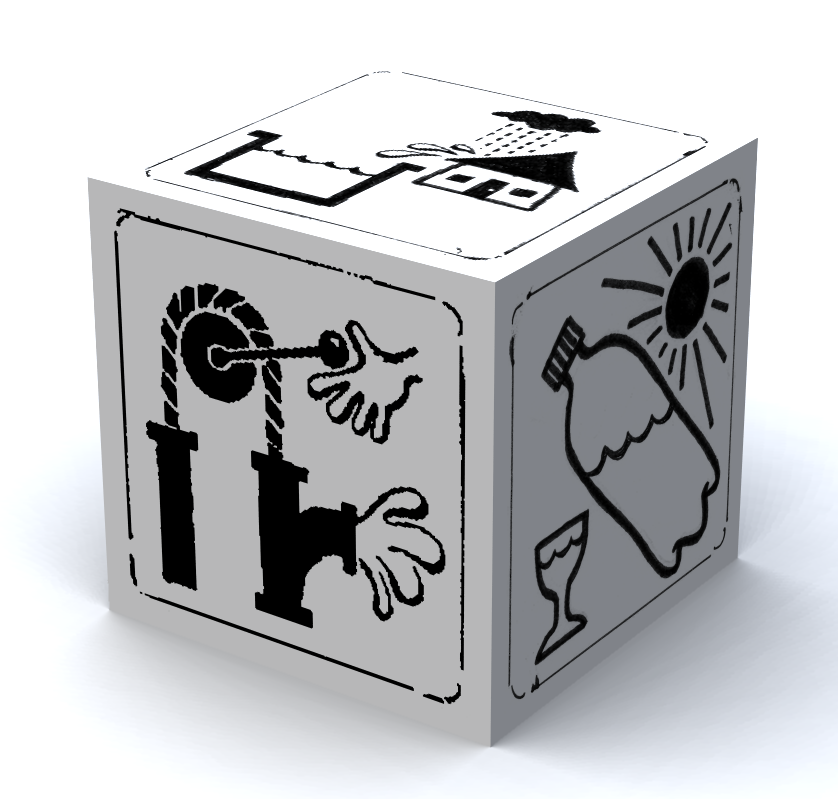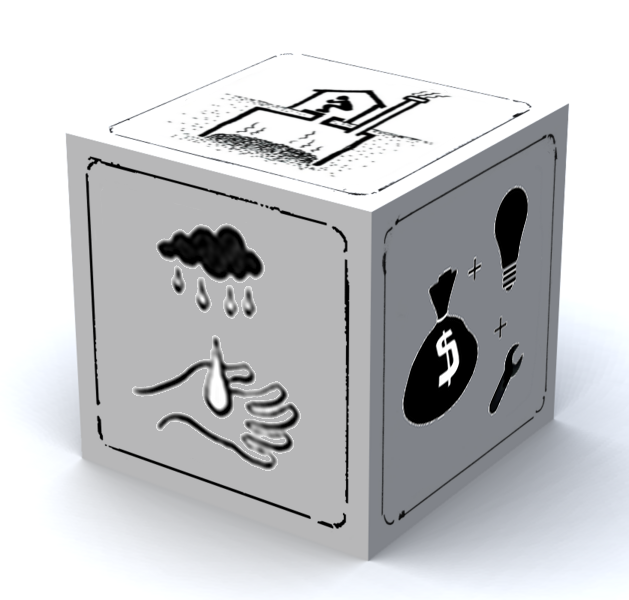|
|
| Line 9: |
Line 9: |
| | !<h2 style="margin:0; font-size:130%; text-align:left; color:#535353; padding:0.2em 0.4em;">What's happening now</h2> | | !<h2 style="margin:0; font-size:130%; text-align:left; color:#535353; padding:0.2em 0.4em;">What's happening now</h2> |
| | |- | | |- |
| − | |<font size="3">'''NEW ARTICLE PAGE: [[Integrated Water Resources Management (IWRM)]]'''</font> | + | |[[Image:akvopedia_Survey-Outcomes_Graphic_v1.1-1.jpg|right|250px|link=http://akvo.org/blog/akvopedia-how-are-we-doing/]] |
| − | [[Integrated Water Resources Management (IWRM)|IWRM]] is based on the understanding that water resources are an integral component of the ecosystem, a natural resource, and a social and economic good.
| + | <font size="3">'''Akvopedia [http://akvo.org/blog/akvopedia-how-are-we-doing/ Survey Results] are in!'''</font> |
| − | [[Image: IWRM photo.png|right|200px|link=http://akvopedia.org/wiki/Integrated_Water_Resources_Management_(IWRM)]] | + | This past spring, we conducted a survey among Akvopedia users to better understand who is using the site, how they use it and why. This survey provided a sample to complement site metrics gathered by our web analytics system. You can read more about the thinking behind the survey [http://akvo.org/blog/9-questions-for-akvopedians/ here]. The survey was available on Akvopedia for roughly six weeks and, during that time, we had a total of 544 responses. |
| − | Managers, whether in the government or private sectors, have to make difficult decisions on water allocation. More and more they have to apportion diminishing supplies between ever-increasing demands. Drivers such as demographic and climatic changes further increase the stress on water resources. The traditional fragmented approach is no longer viable and a more holistic approach to water management is essential. This is the rationale for the Integrated Water Resources Management (IWRM) approach that has now been accepted internationally as the way forward for efficient, equitable and sustainable development and management of the world's limited water resources and for coping with conflicting demands.
| + | <br> |
| | |- | | |- |
| | |} | | |} |
Revision as of 03:42, 7 August 2014
Welcome, bienvenue and bienvenido to Akvopedia!
Welcome to Akvopedia, the open water and sanitation resource that anyone can edit. We strive to improve water and sanitation projects through knowledge exchange on smart and affordable technical solutions and effective approaches. Akvopedia now contains 2,211 articles primarily in English, including some in French and Spanish. Akvopedia is hosted and managed by Akvo Foundation.
What's happening now
|
|
Akvopedia Survey Results are in!
This past spring, we conducted a survey among Akvopedia users to better understand who is using the site, how they use it and why. This survey provided a sample to complement site metrics gathered by our web analytics system. You can read more about the thinking behind the survey here. The survey was available on Akvopedia for roughly six weeks and, during that time, we had a total of 544 responses.
|
Water Portal
|
| The Water Portal contains information on water collection, pumping and transportation, storage, treatment, and use of water.
|
Sanitation Portal
|
| The Sanitation Portal contains information on toilets, collection, transportation, treatment, use of products, hygiene, and training materials.
|
Finance Portal
|
| The Finance Portal contains information on the costs needed to finance, how to finance these costs, and how to monitor finance.
|
Sustainability Portal
|
| The Sustainability Portal contains information on numerous sustainability frameworks, tools, and methods, using the F.I.E.T.S approach.
|
Decision & Assessment Tools - NEW!
|
| Decision & Assessment Tools contain several tools, assessments, or kits that aid in the implementation of water and sanitation projects in an easier way.
|
|
More news
|
|
This article covers the topic of communal latrines, also called institutional or school latrines. Much of the material in this article is based on project successes in the Sudan. This is a portion of the document of Technical Guidelines, outlining best practices for the development of the 14 types of water supply and sanitation facilities in the Sudan. Several of them are communal (multi-user) latrines.
IRC and Akvopedia have teamed up to produce an all new Sustainability Portal based on the Dutch WASH Alliance F.I.E.T.S. principles of financial, institutional, environmental, technological, and social sustainability. Included are the 10-part Triple-S building blocks from IRC and other sustainability frameworks. With over 50 new article pages and many more sustainability tools, slideshows, and videos... water and sanitation project members can now think about their WASH system's longevity with confidence.
Community-based saving is a microfinance model that is considered to be an effective method for financing projects in sustainable sanitation and water management. This is an effective method for saving a small amount of money by organising or joining a saving group of up to 25 people. These people might be colleagues, friends or neighbours coming from the same community. The method is very simple and easy to implement.
|
Contributing to Akvopedia
|
| Share your news and knowledge on water and sanitation by contributing articles to the Akvopedia. We've used the same conventions as the well-known online resource Wikipedia, so adding and editing articles is quick and easy to learn. This graphical guide will get you started; more detailed information about editing wiki articles is available in the help pages: Help:Contents
|
Editorial support
|
|
Do you have quality content that you would like to contribute to Akvopedia, but lack the time or resources to upload it? Akvopedia offers free editorial services and always appreciates suggestions and links to expand our WASH wiki. Please contact our editor Winona Azure at winona akvo.org. Thank you for visiting! akvo.org. Thank you for visiting!
|
|







